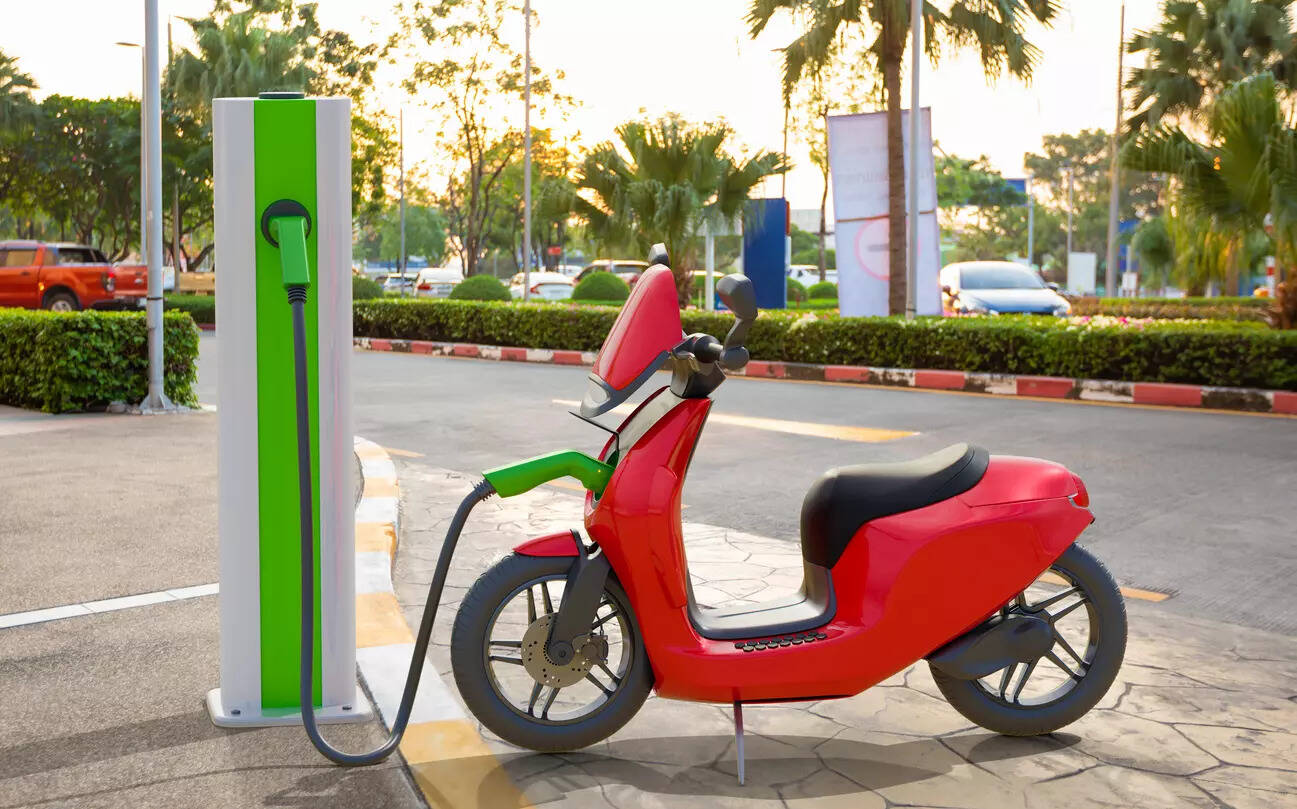[ad_1]
Highlights
- Ola Electric’s share in the e-scooter market has sharply declined by 30%.
- Traditional players like Bajaj and TVS doubled their sales.
- Ather Energy has tripled its sales with extensive market strategies.
- Ola’s shift to a 4,000 outlet retail model can be an unsustainable model unless volumes rise significantly warns industry observers.

New Delhi: Ola Electric Mobility has announced hefty discounts on some of its electric two wheelers (e2w), probably hoping to entice customers back to showrooms on the occasion of Akshaya Tritiya today. The offers come in a month where Ola has likely lost the crown to TVS Motor Company in terms of sales, with data from the vahan portal indicating that as on date, TVS retailed close to 18000 against Ola’s retail number of over 17,000 units. Also Read: Electric two wheeler sales cross a million units in FY25 but growth is slowing down
Ola’s market share slide comes even as the electric two wheeler (e2w) market as whole grew by almost 30per cent year on year, from 63,646 units in April 2024 to 82,519 units this month (till date). In this growing market, however, Ola has almost halved the number of vehicles registered in April this year versus the year-ago period. Ather Energy, meanwhile, has seen a nearly three fold increase in registrations year on year. In April till date, Ather sold close to 12000 units versus just under 4000 units in the same month last year; Bajaj Auto has more than doubled sales in the 12-month period to over 17,000 units and TVS has also more than doubled its sales year-on-year. From these numbers, it is apparent that the benefit of expansion in the growing e2w market has been taken by Ather, TVS and Bajaj.
The sweeping changes which Ola has been implementing in its vehicle registration process, while moving away from the earlier warehouse model, may have been a factor in sales slowing down in AprilIndustry observer
The decline in Ola’s market share in one year has been remarkable: Ola accounted for at least every second e2w sold in India last April but now accounts for just about every fifth. TVS and Bajaj have steadily tightened their grip on the market, while Ather has seen a slow but steady increase in market share on the back of product portfolio expansion.
Also Read: Ola Electric says unaware of notice to shut 100 showrooms in Maharashtra
An Ola spokesperson did not respond to messages seeking comment. An industry watcher pointed out that the sweeping changes which the company has been implementing in its vehicle registration process, while moving away from the earlier warehouse model, may have been a factor in sales slowing down in April. In any case, the sales numbers in February have been under dispute, with Vahan data showing significantly less numbers than what the company has claimed. Earlier this year, Ola had said it was reorganising the registration process and renegotiating the terms with two agencies which were handling this.
Also Read: How IPO-bound Ather Energy stacks up against Ola Electric, Bajaj Auto, Hero Moto, TVS Motor
Meanwhile, the person quoted above said that under the present model, where Ola claims to have about 4000 retail outlets, the logistics costs of servicing each outlet could be rather high, “so this is a risky bet. This model can be sustained only when monthly retail volumes pick up. Ola is a company learning things on the go, it started with a B2C model where purchase orders were placed online but there were no experience centres for customers. This did not work and the company eventually realised that physical presence is needed. Somewhere along the line, the new retail model Ola had now adopted may also not work. If there are 4000 outlets, each is selling only 6 scooters a month on an average and this is not a viable business model.”
Things are expected to improve in the coming months though, as Ola starts deliveries of its electric motorcycles, which addresses a larger segment of the market and which could eventually lead Ola closer to the 50,000 unit per month sales mark.
Some of our electric vehicle products are in the final stages and will be launched in the coming quarterK N Radhakrishnan, TVS
Legacy on winning streak
As electric-first OEMs struggle to find their feet, the legacy two wheeler manufacturers are gliding towards market leadership. A prominent dealer had said earlier that Bajaj has been upping its game with the Chetak now available across nearly 700 showrooms across the country. “So distribution has been a strength. Another reason for Bajaj doing so well is its pricing strategy. The Chetak is now covering all possible price points – ₹95,000, ₹105,000, ₹125,000 and ₹135,000. The product at each price point looks exactly the same, the difference lies in battery capacity and some other features like bluetooth connectivity etc. The entire price spectrum has been covered and prices are sometimes being tweaked on a weekly basis,” he had said, requesting anonymity.
As for TVS, CEO K N Radhakrishnan said in the post results conference call earlier this week that the three battery variants had been introduced by the company in the iQube portfolio during FY25 and it had already become “a very strong brand”. He also spoke about getting “very good response (from these variants)” and expanding the distribution network further. “Some of our electric vehicle products are in the final stages and will be launched in the coming quarter,” he said, indicating that portfolio expansion and pricing tweaks will continue.
[ad_2]
Source link





